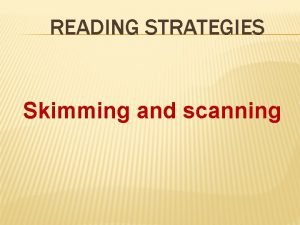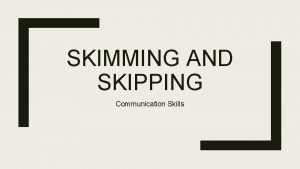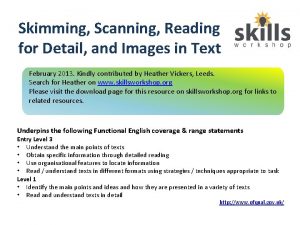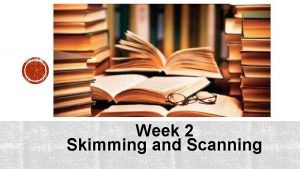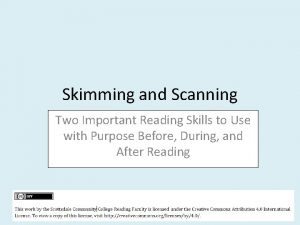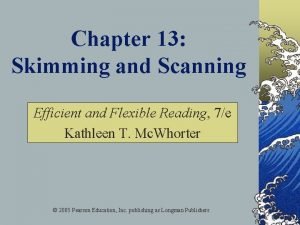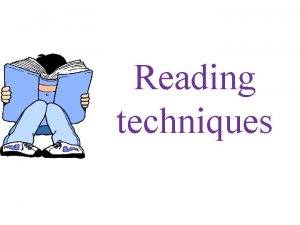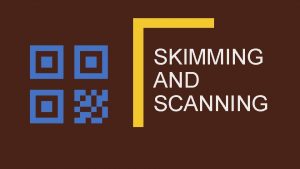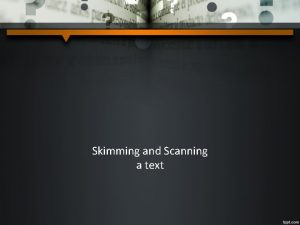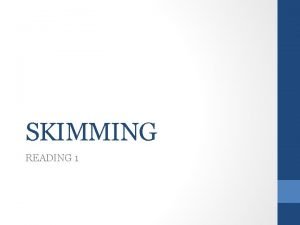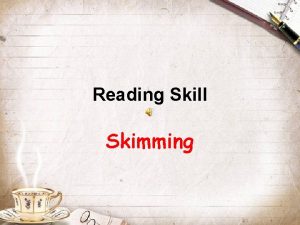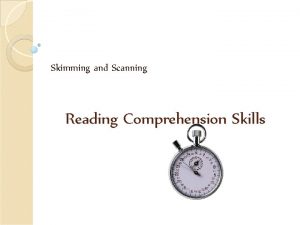READING STRATEGIES Skimming and scanning WHAT IS SKIMMING







- Slides: 7

READING STRATEGIES Skimming and scanning

WHAT IS SKIMMING? Skimming is a reading technique that can help you to: � read more quickly � decide if the text is interesting and whether you should read it in more detail Skimming is a fast reading technique. Use it to obtain the gist of a piece of text (i. e. to quickly identify the main ideas in the text).

HOW IS 'SKIMMING' DIFFERENT FROM 'SCANNING'? The term skimming is often confused with scanning. Remember: Skimming is used, for example, to get the gist of a page of a textbook to decide whether it is useful and should therefore be read more slowly and in more detail. Scanning is used to obtain specific information from a piece of text and can be used, for example, to find a particular number in a telephone directory.

Sometimes you can use both reading methods. After you have skimmed a piece of text to decide whether the text is of interest, you may wish to use scanning techniques to locate specific information.

HOW TO SKIM: Read the title, subtitles and subheadings to find out what the text is about. Look at the illustrations to give you further information about the topic. Read the first and last sentence of each paragraph. Don't read every word or every sentence.

WHAT IS SCANNING? Scanning is a fast reading technique. It's a way of reading to look for specific information in a text. Scanning can be used to read through the ads in a newspaper, or for browsing TV schedules, timetables, lists, catalogues or web pages for information. For these tasks you don't need to read or understand every word. Scanning is also useful when studying or looking to find specific information from a book or article quickly as there is not always time to read every word.

HOW TO SCAN: � Don't try to read every word. Instead let your eyes move quickly across the page until you find what you are looking for. � Use clues on the page, such as headings and titles, to help you. � If you are reading for study, start by thinking up or writing down some questions that you want to answer. Doing this can focus your mind and help you find the facts or information that you need more easily.
